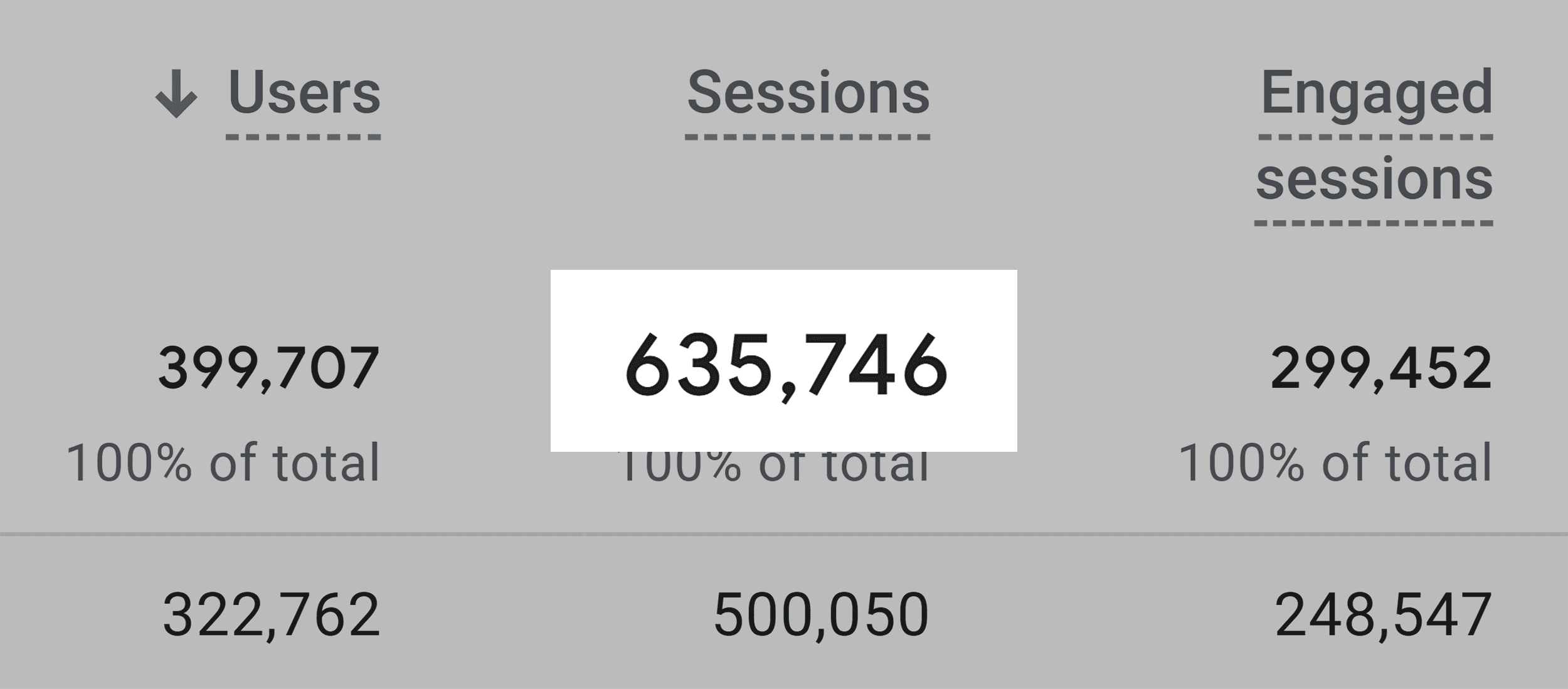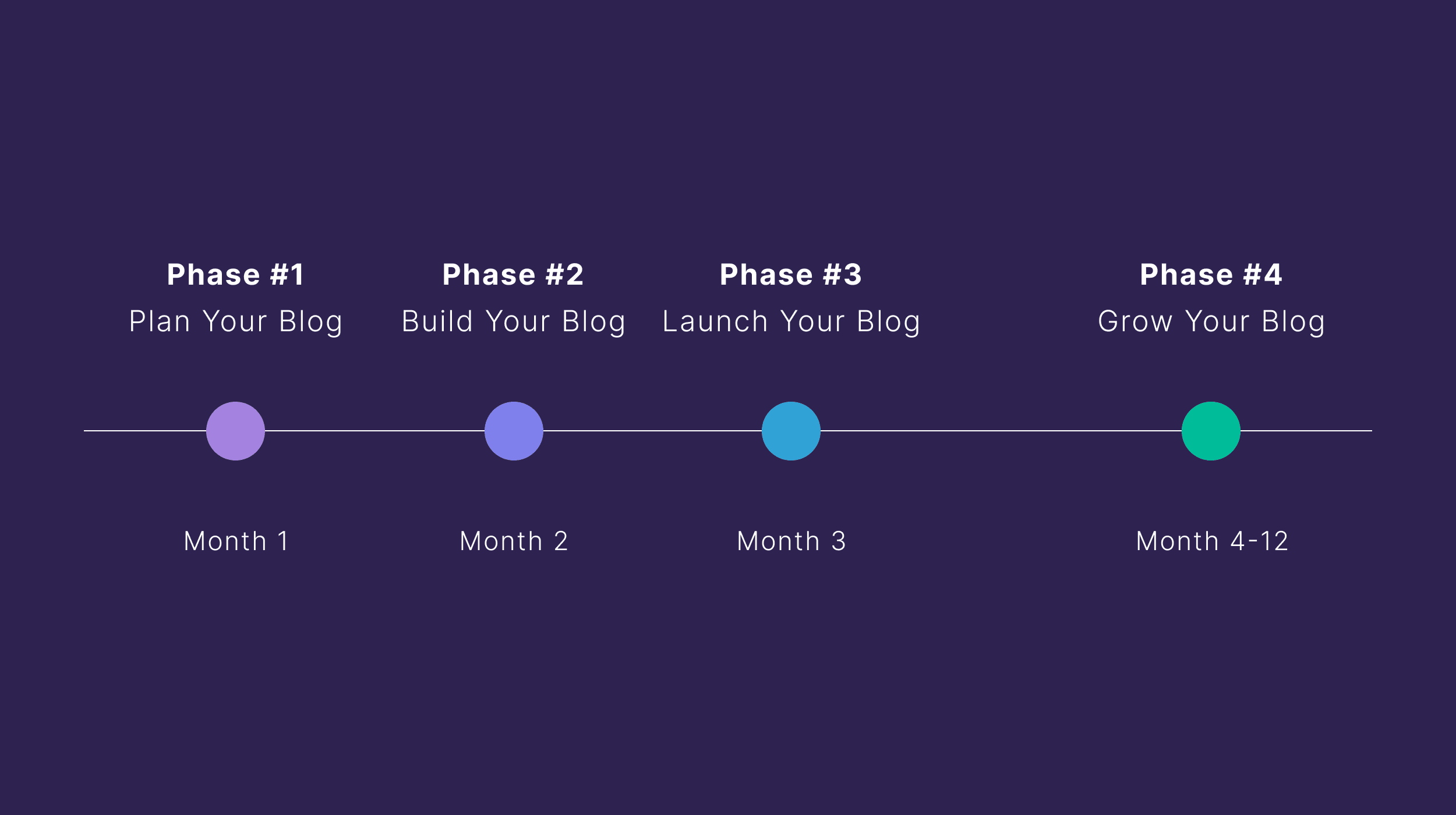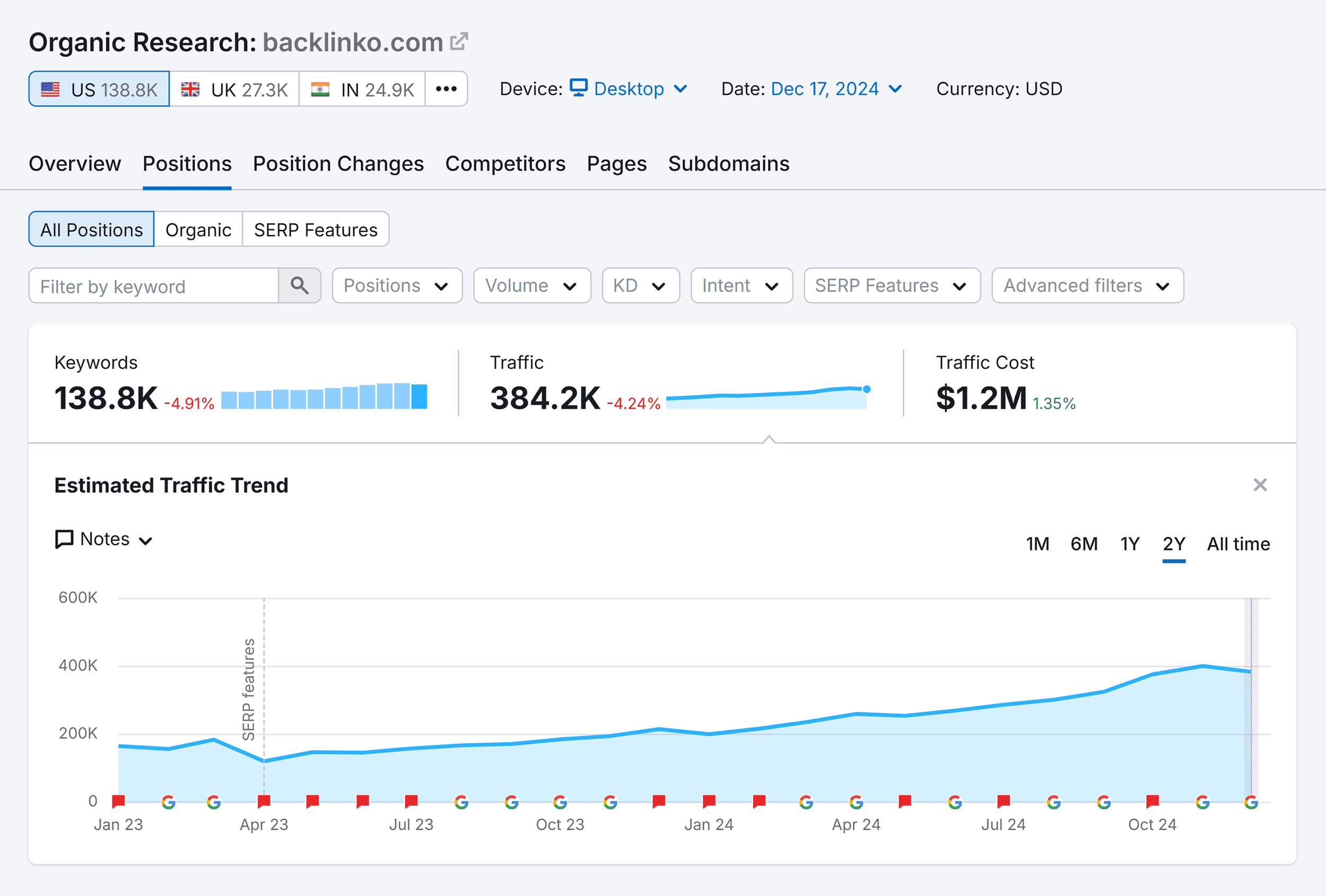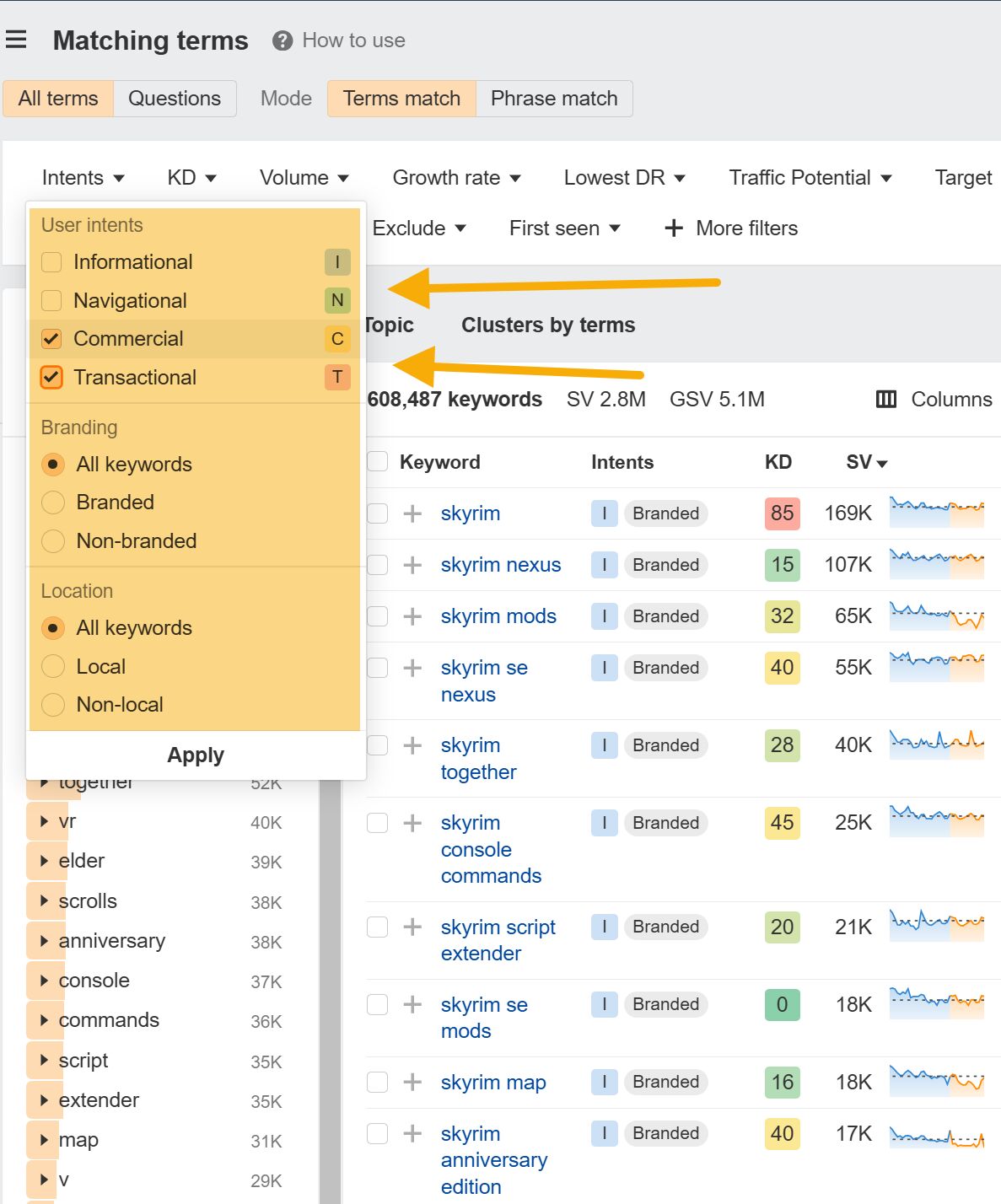Making great content isn’t easy, but a solid content brief can make all the difference.
A good brief helps everyone—writers, editors, and strategists—stay on the same page.
This ensures every post is useful, clear, and built to perform.
At Backlinko, we’ve seen how strong content briefs drive results.
They’ve helped us attract over 635,000 organic visitors every month.
In this guide, you’ll learn what to include in a content brief, see three examples, and get step-by-step instructions to create your own.
What Is a Content Brief?
A content brief is a blueprint for high-quality, engaging, and SEO-friendly content.
It includes elements to help writers create content that connects with the audience.
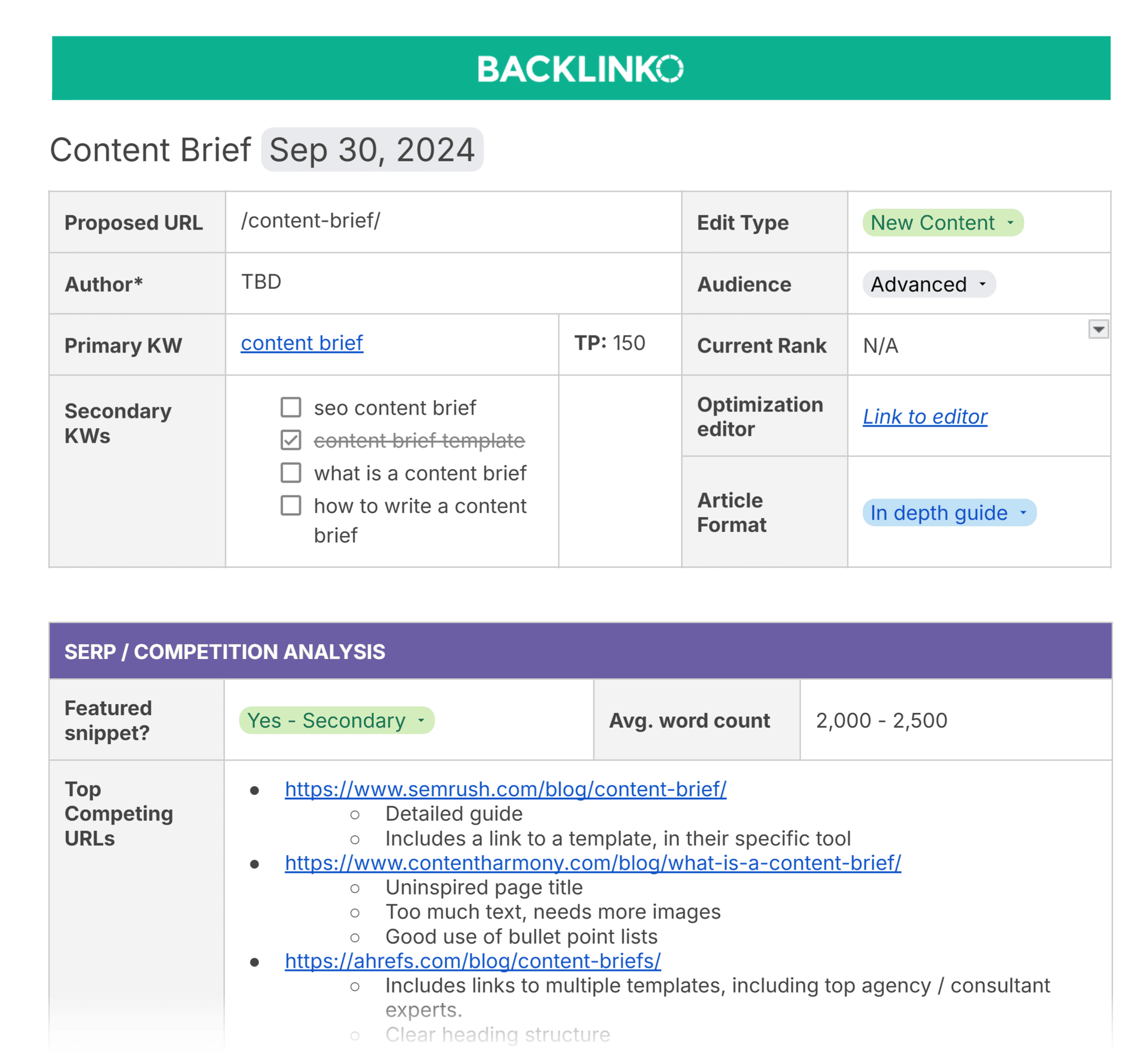
Content briefs help teams work together by reducing revisions and speeding up the writing process.
Strategists set the goals. Writers follow the plan. Editors make sure the content meets the brief’s requirements.
When everyone is aligned, things run smoothly, and communication improves.
The result? High-performing content.
Here’s what team collaboration looks like at Backlinko:
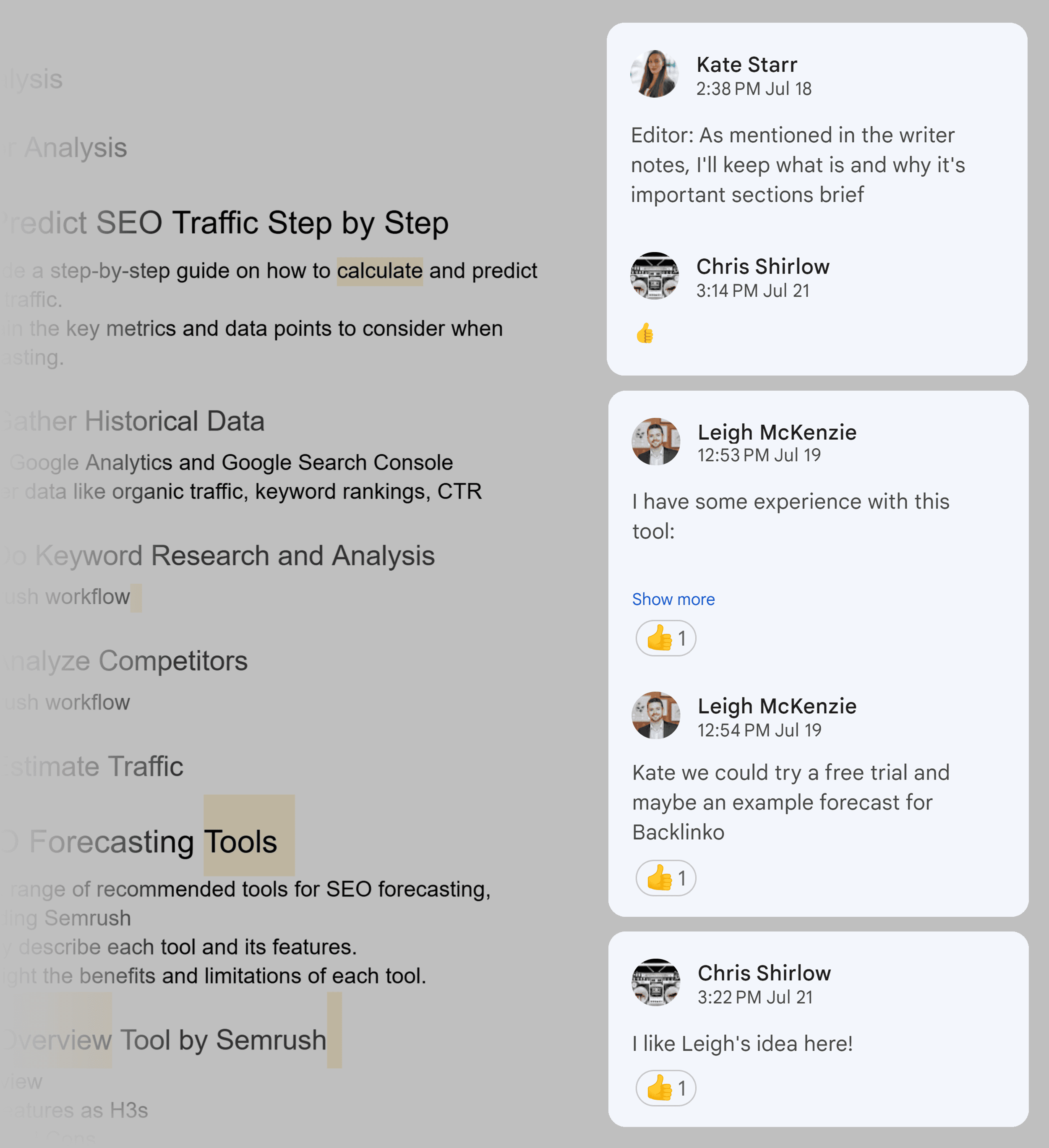
What to Include in a Content Brief
Outside of keywords, it’s debatable what you should include in your brief. But after publishing hundreds of articles, we’ve found these elements work best:
Primary keyword: The main term or phrase your content must focus on.
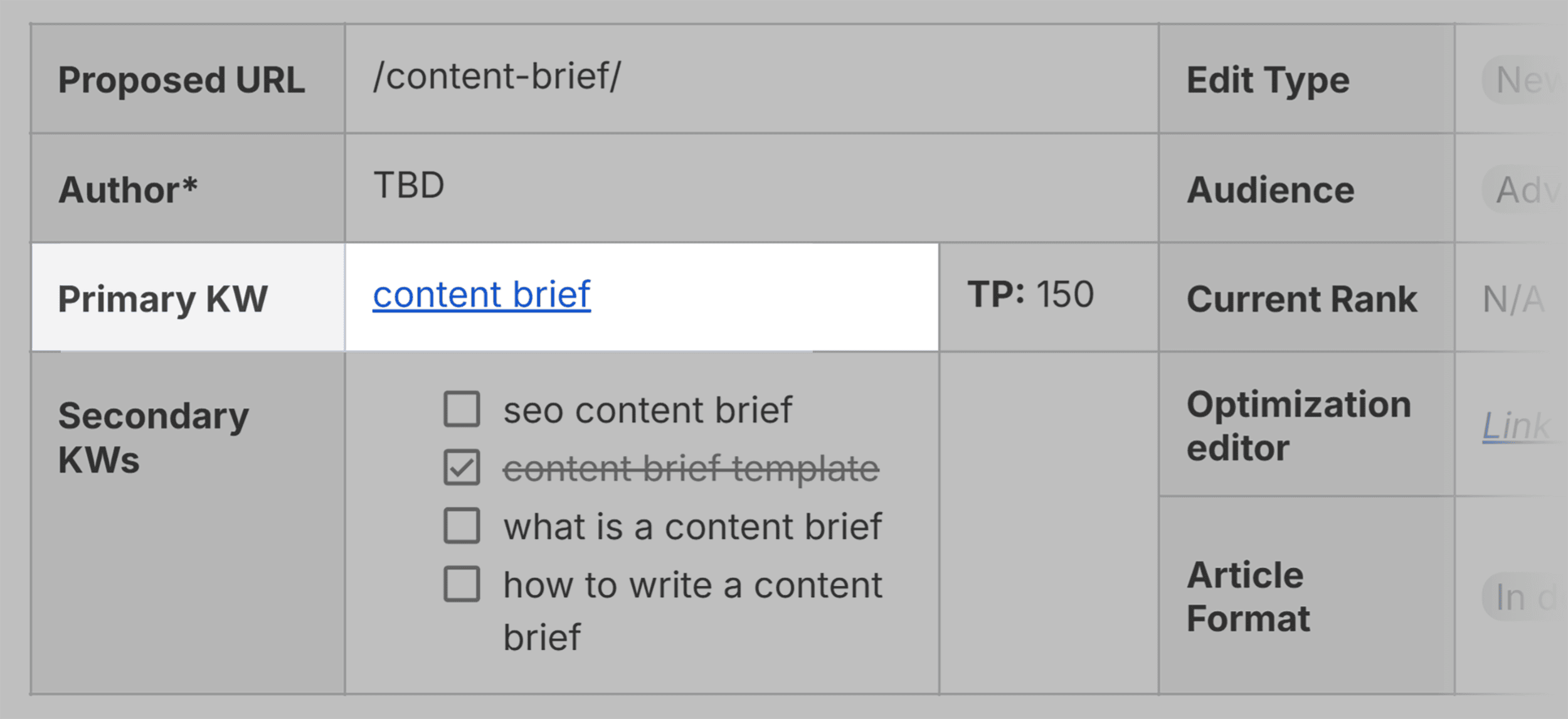
Secondary keyword: Related words or phrases that support the primary keyword. They aren’t popular enough to deserve their own page but still add value.
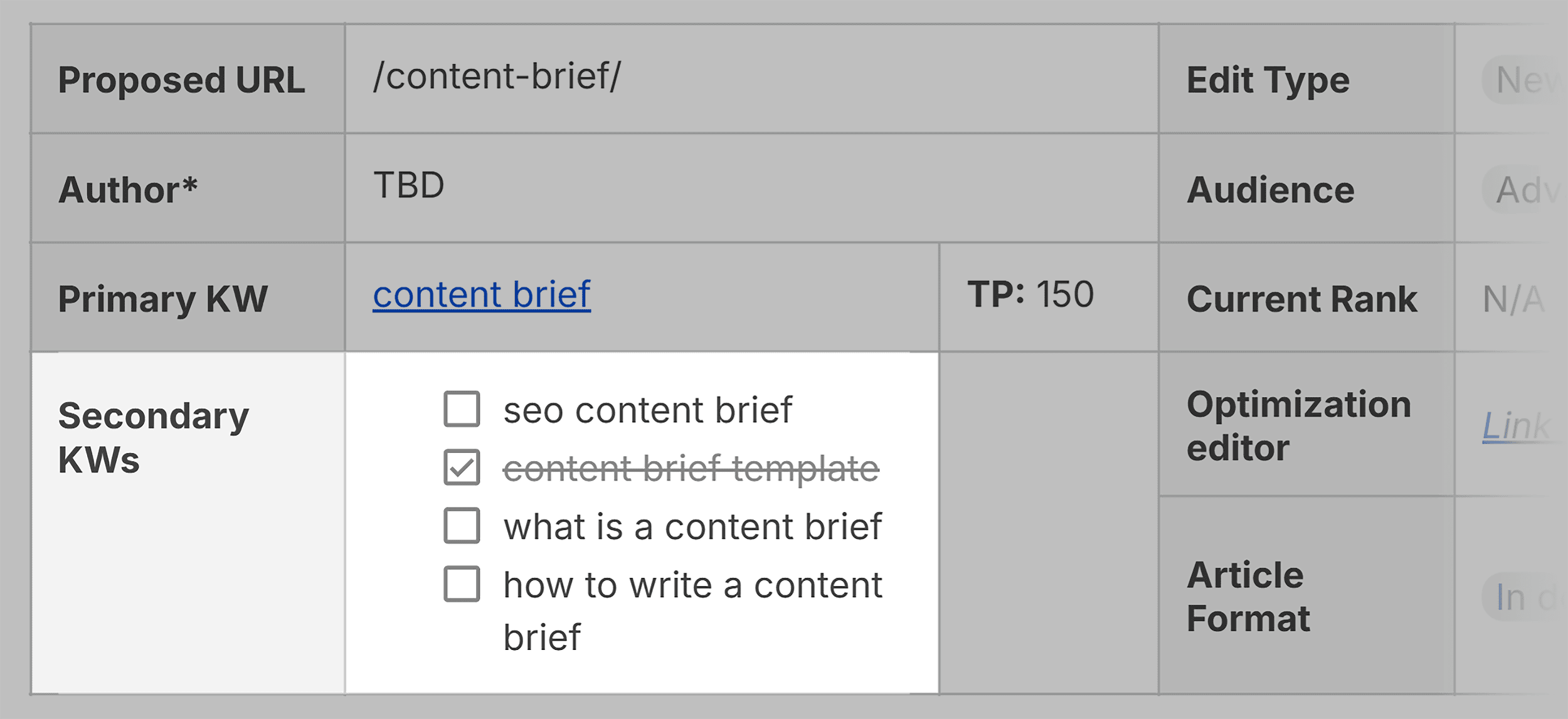
Estimated word count: Suggested length for the content. It gives writers a clear idea of how detailed the content should be.

Competing URLs: Links to top-ranking posts for the primary keyword. Includes the strategist’s notes on what helps these posts rank well.

Notes about the search engine results page (SERP): Observations about the search results for the primary keyword. This includes notes on the types of content that are ranking, such as blog posts or landing pages.

Internal link suggestions: Links to other relevant pages on your website. Writers can include these to distribute page authority and improve user experience.
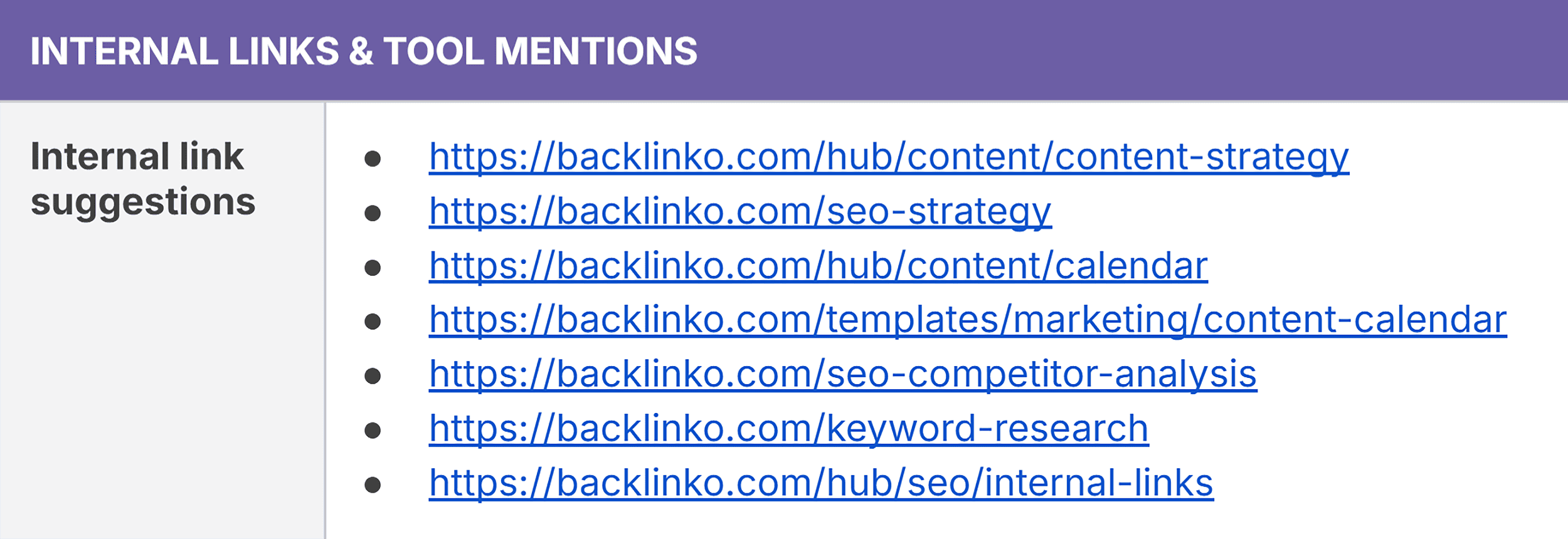
Reader profile: Describes the ideal reader. Includes details about their experience, knowledge level, challenges, and content preferences. This helps tailor content to the reader’s needs and interests.

Notes for writer: Provides specific guidance to help them meet the objectives
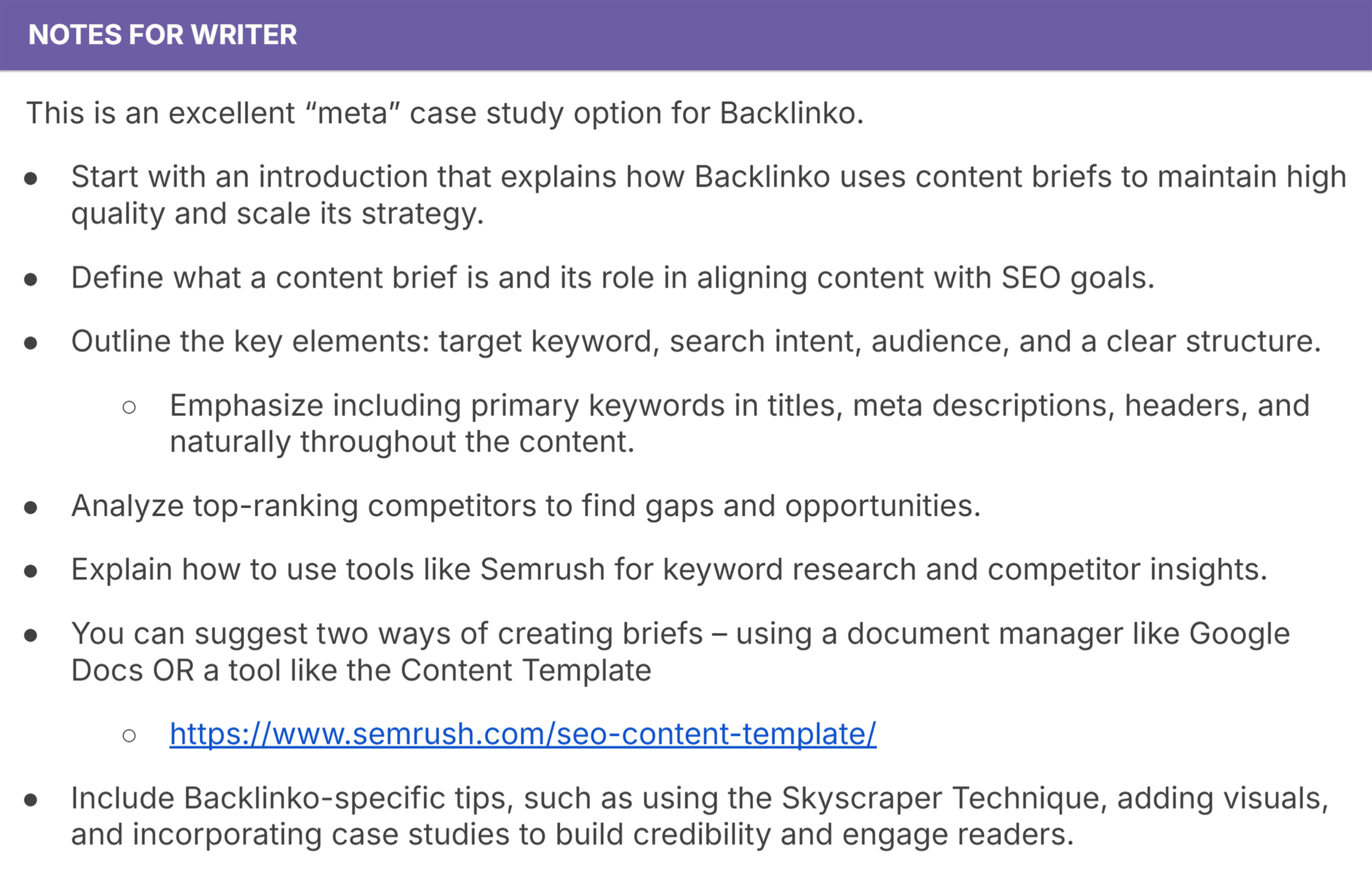
After you master the above, you can improve your content briefs with these additions:
- Internal research: Include data, studies, or reports from your company.
- External research: Credible data or information from outside sources to support your claims.
- LinkedIn posts: References to relevant posts that can be used as examples or insights.
- Podcasts: Audio shows related to the topic. Use them as references.
- Whitepapers: In-depth reports or guides on the topic with detailed information.
How to Write a Content Brief
Creating an effective content brief requires balancing structure with flexibility. These steps will help you build briefs that set your content up for success from day one.
1. Research the Primary Keyword
The first step is to research keywords that match your product, service, or business.
Focus on terms that fit your goals.
If a keyword is too competitive, start with lower-competition ones that are easier to rank for.
Use a tool like Semrush’s Keyword Magic Tool to find the most promising keywords.
This tool gives you access to over 25.5 billion keywords—updated in real time.
Launch the tool and enter a seed keyword related to your business. (E.g., “marketing tools” for marketing software).
Then, select your country from the dropdown menu.
Next, click “Search.”
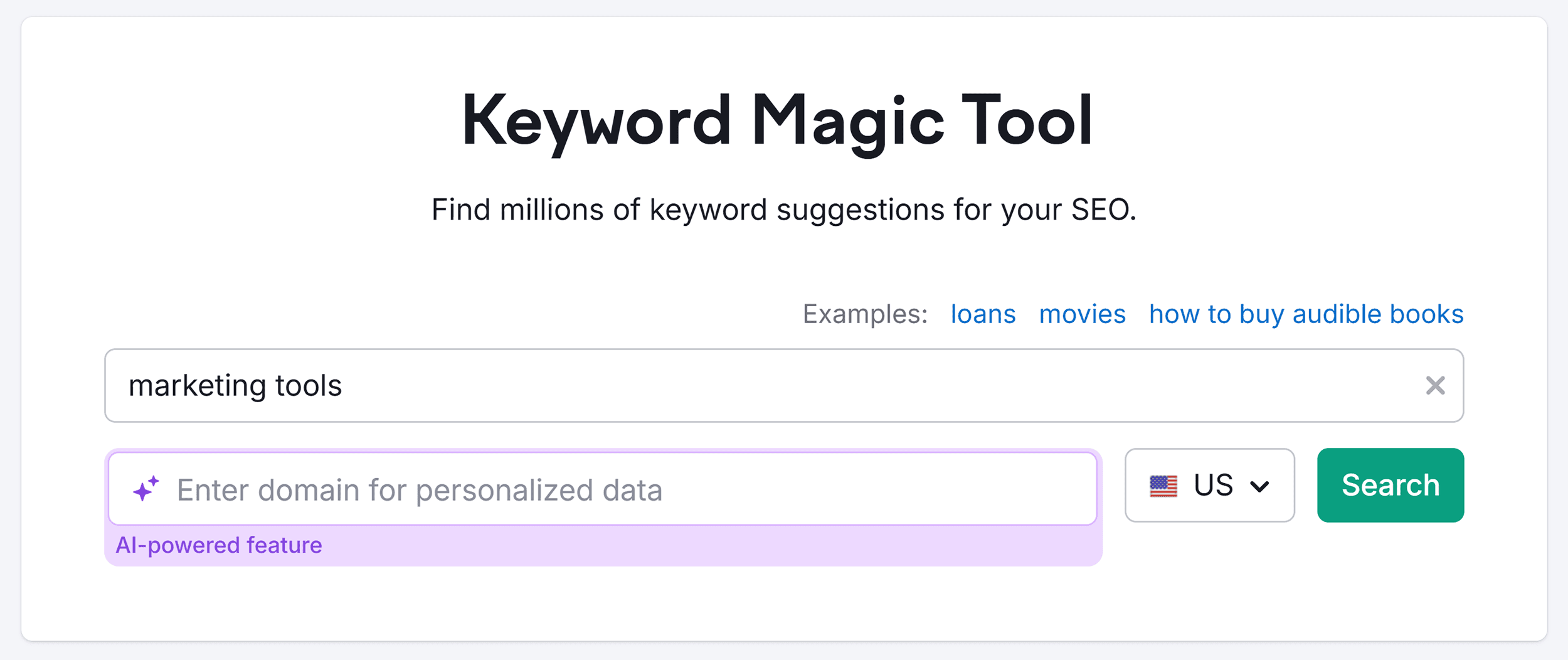
You’ll see a list of related terms along with metrics like search intent, volume, and keyword difficulty (KD%).
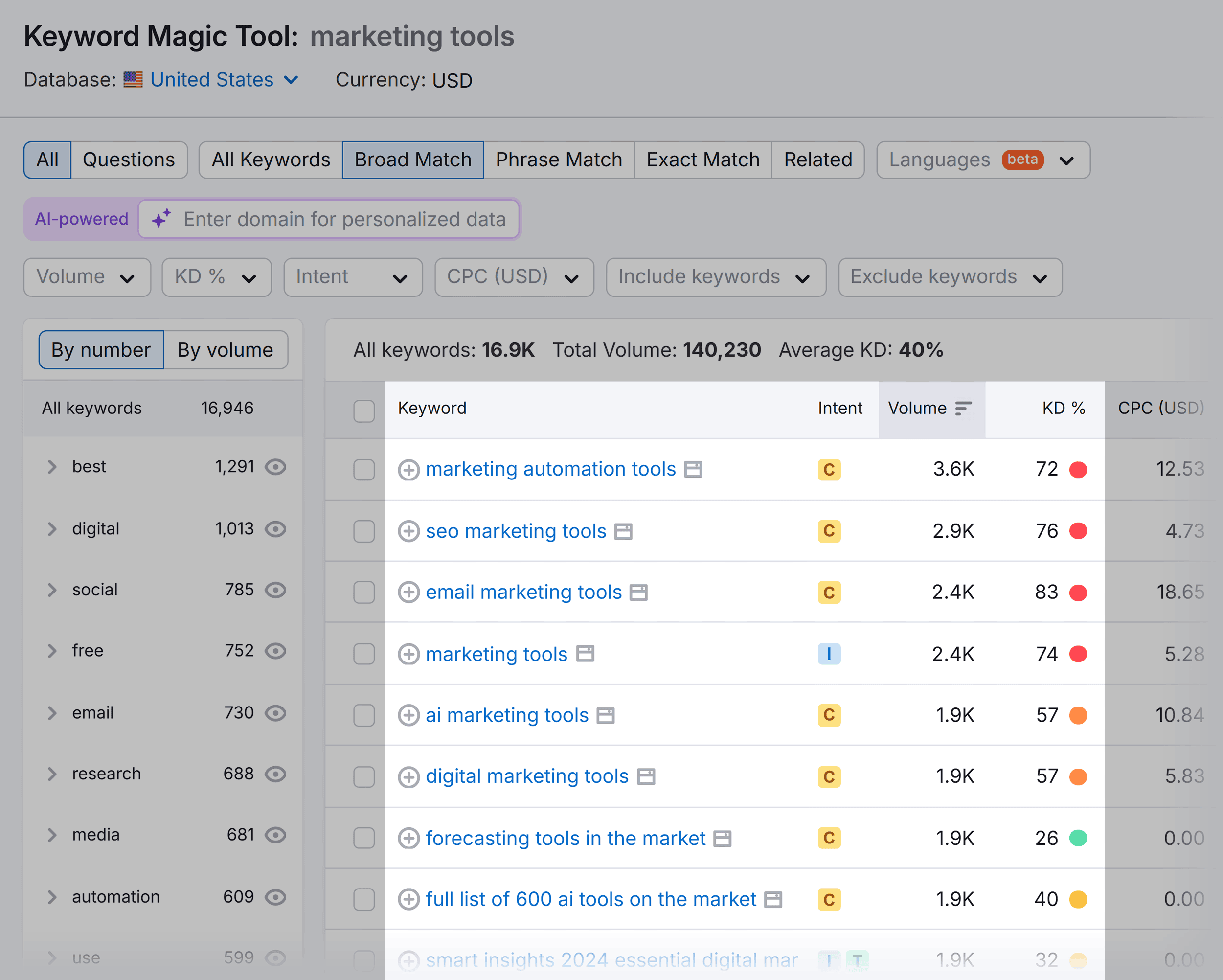
Use filters to find the best keywords for your business.
For example, the “KD%” filter lets you find “Easy” or “Very Easy” keywords.
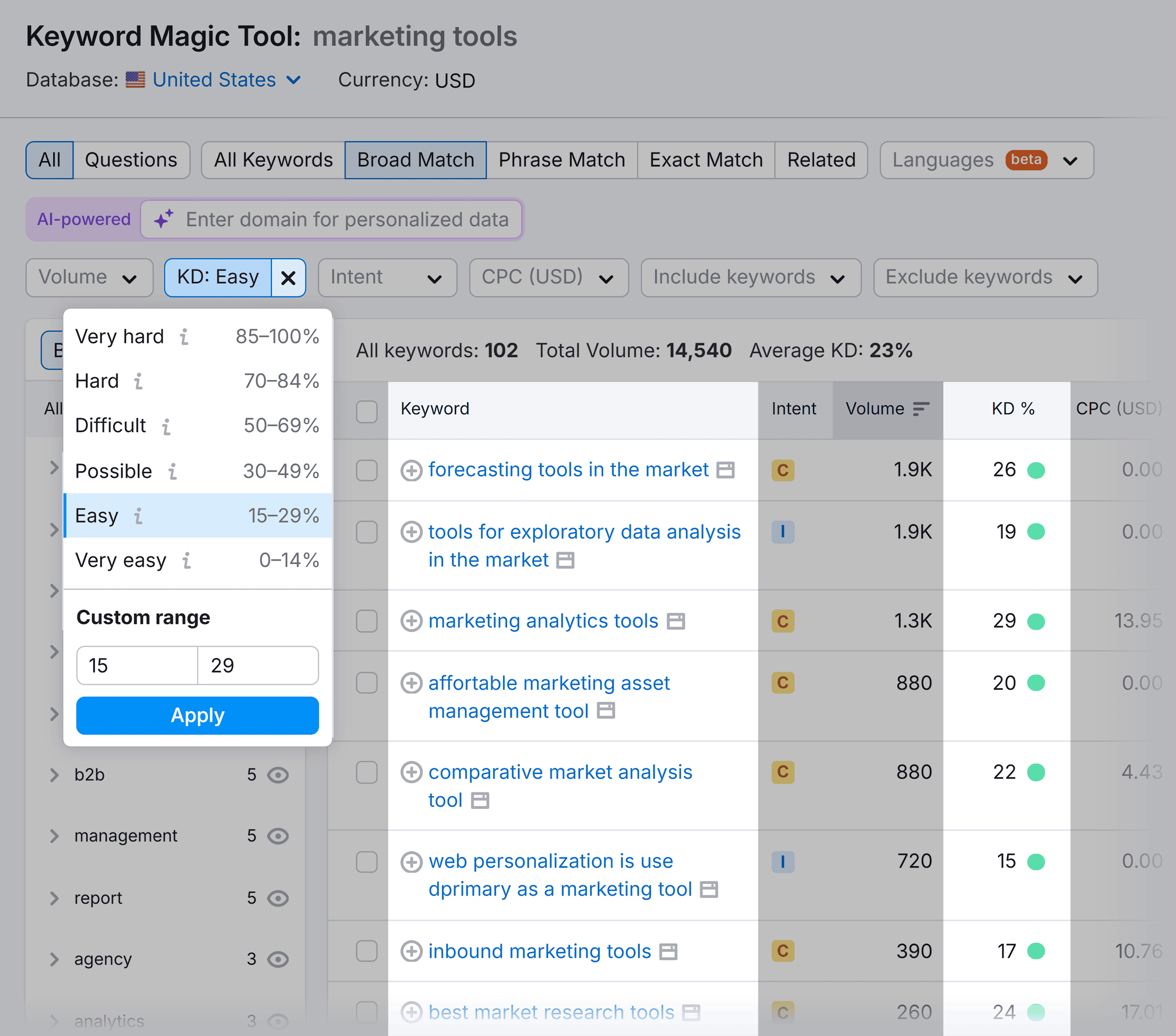
You can also use the “Volume” filter to identify highly searched keywords.
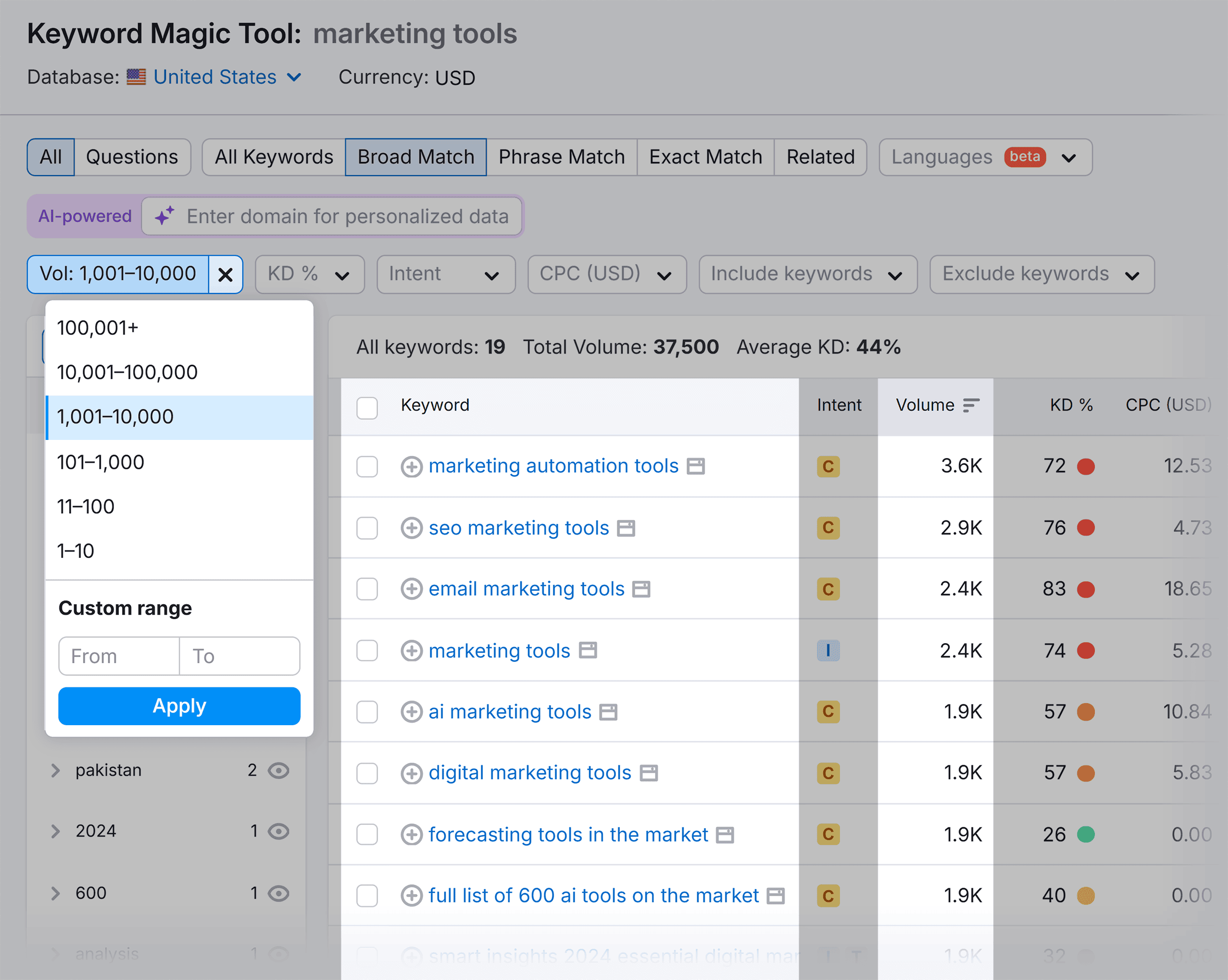
Use a combination of filters to find the most promising and relevant keywords.
For example, set the volume filter to “101 – 1,000” and the KD% to “Easy.” This can help you find keywords that are both easy to rank for and have decent search traffic potential.
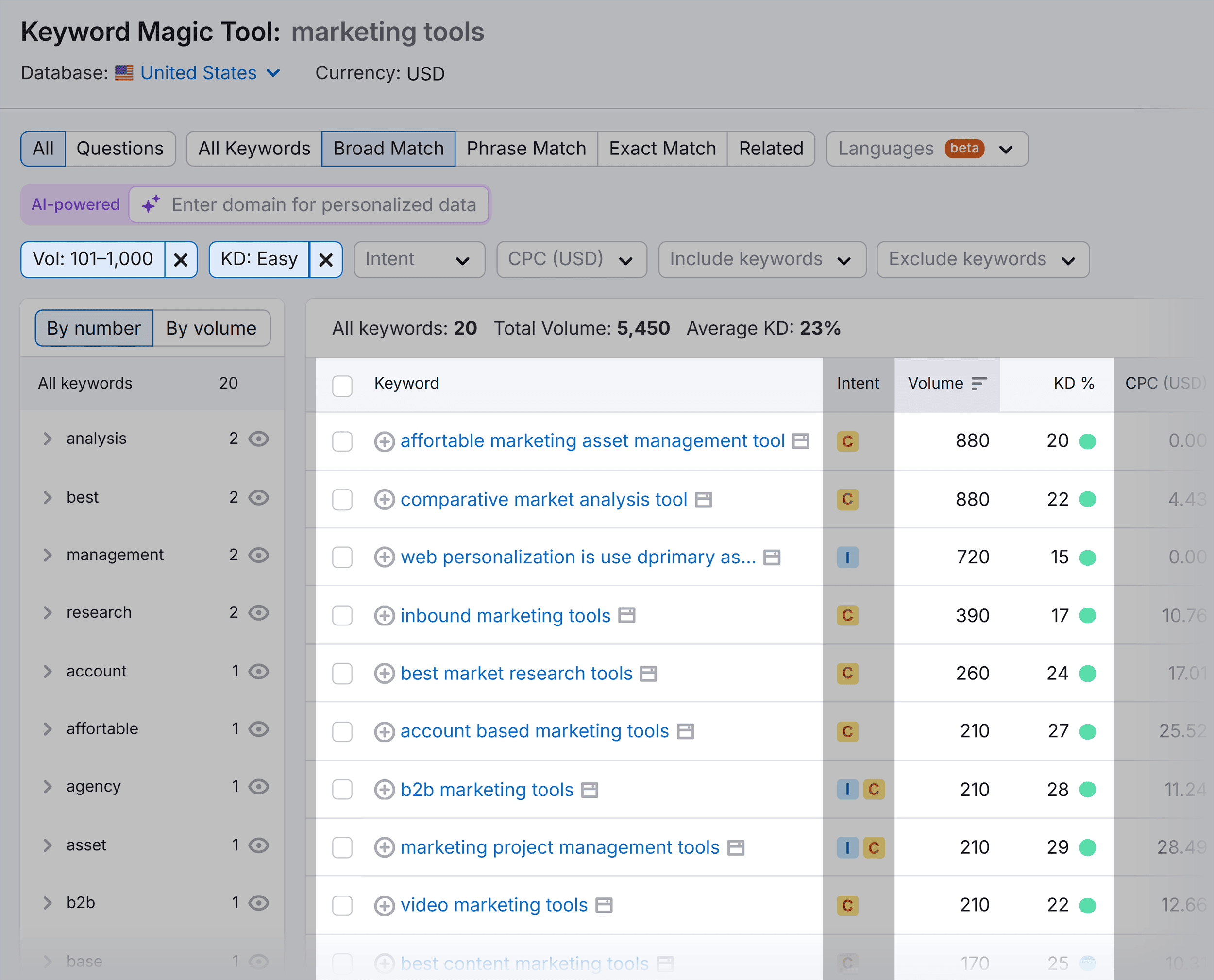
2. Identify Relevant Secondary Keywords
Add secondary keywords to help your blog post rank for more than just the primary keyword.
But how do you find them?
A keyword research tool can be useful for discovering these terms.
But there are also free, easy ways to get them directly from search engines.
For example, search “marketing tools” on Google. The People Also Ask (PAA) section shows related questions people search for.
These questions can give you ideas for topics and other keywords to include in your content.
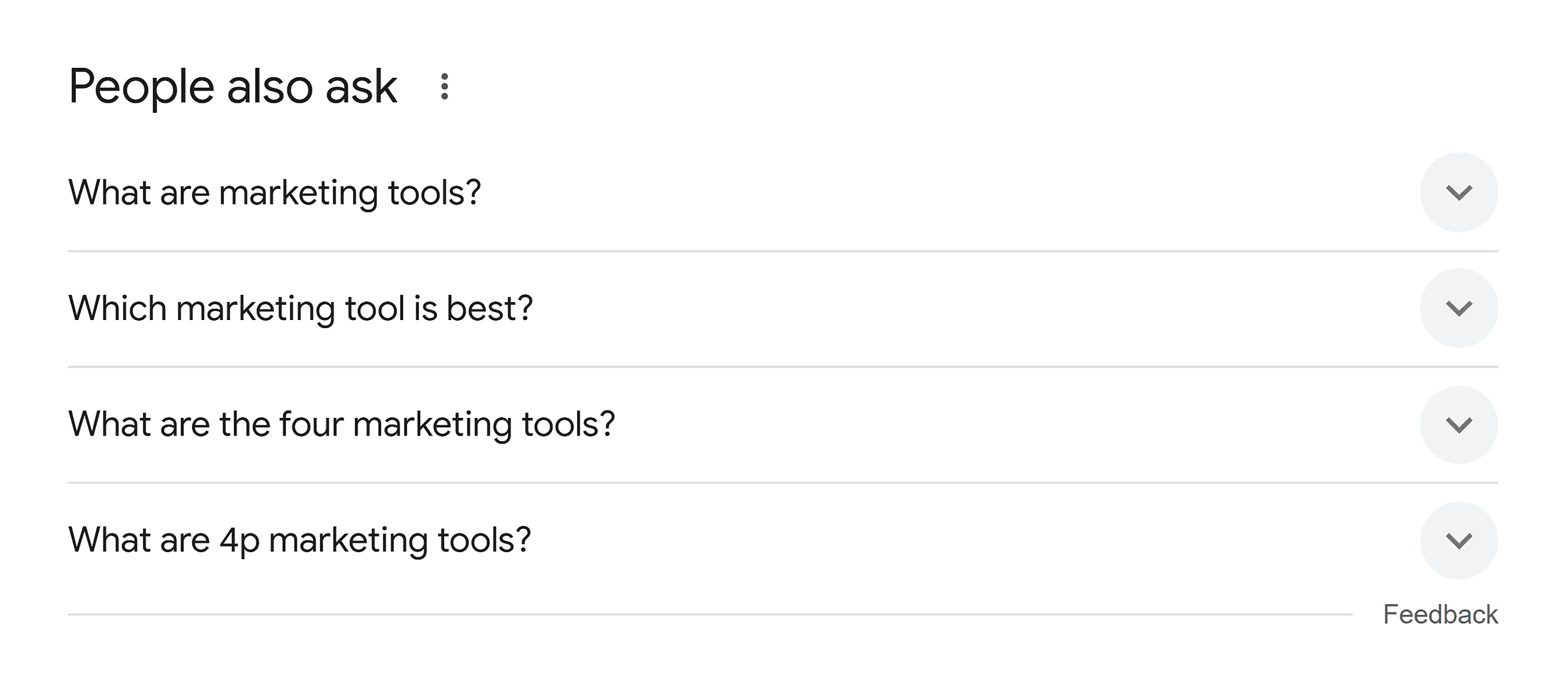
You can also use Google Keyword Planner to find additional related terms.
Enter your primary keyword to see suggestions, search volume, and competition level.
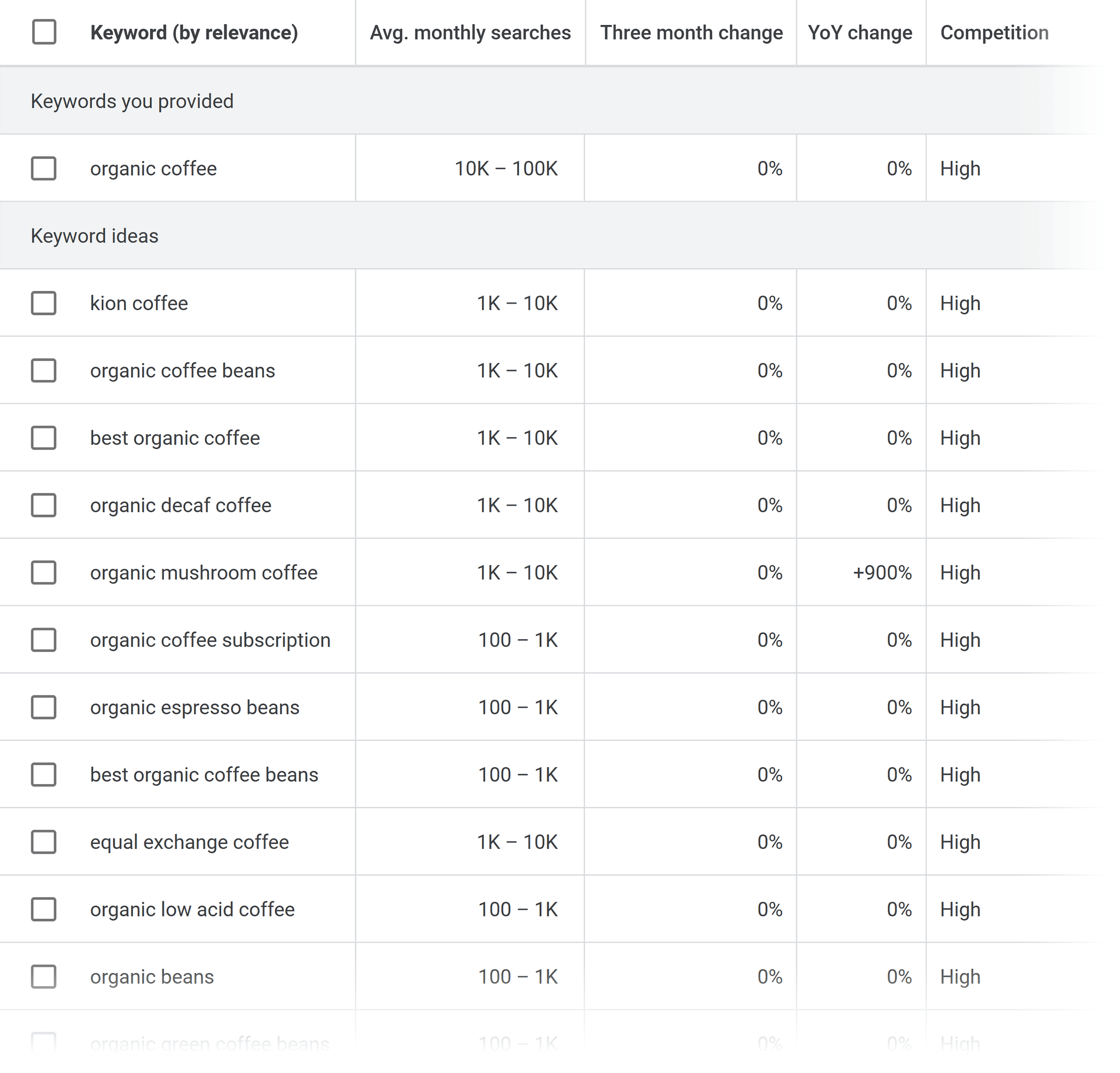
3. Analyze the Top-Competing URLs
Start with an SEO competitor analysis and review the top-ranking URLs for your primary keyword.
This process offers valuable insights into why those pages perform well. It also reveals opportunities to create even better content.
Begin by examining the content’s length, structure, and depth.
Check the articles thoroughly. Do they cover the topic, use clear headings, and provide actionable information?
This helps you understand what content structure Google may reward.
Next, look for any gaps in their content.
Are they leaving important questions unanswered, or is the information incomplete?
Identifying these gaps helps you create valuable content that addresses what competitors missed.
Also, pay attention to the use of visuals like images, infographics, or videos. Visuals break up text, increase engagement, and improve user interaction.
For instance, a comparison table can show key features and differences between options.
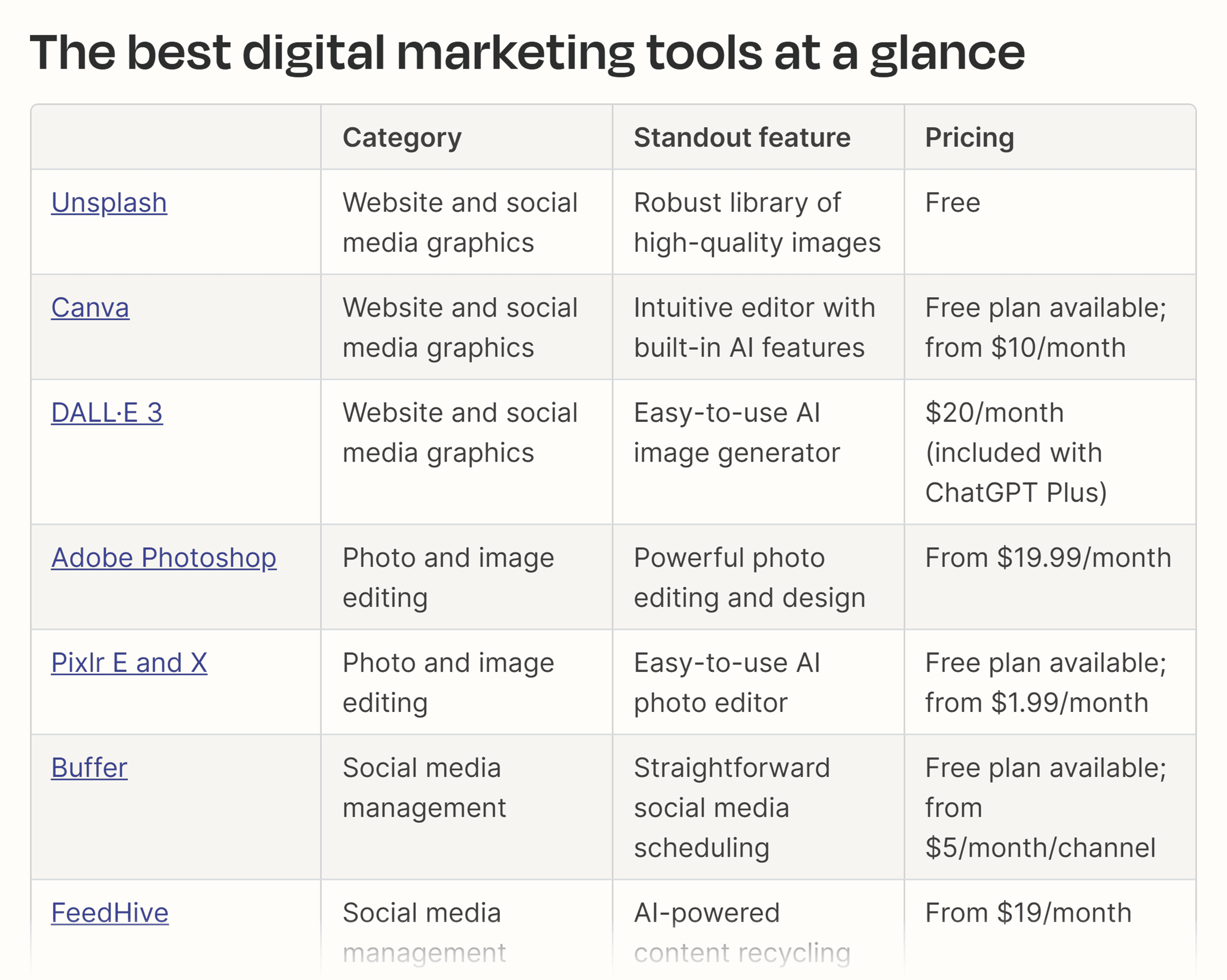
Add all these observations, along with the top competing URLs, to your SEO content brief.
This will give writers a clear context on what the competition is doing. And how to outperform them.
4. Calculate the Estimated Word Count
Every content brief should include an estimated word count.
This helps writers understand how detailed the content should be and keeps them on track. It’s also important for budgeting—especially if you’re paying per word.
So, how do you calculate the estimated word count?
Analyze top-ranking articles for your primary keyword.
Do longer posts rank better, or are concise ones performing well?
Use tools like WordCounter, Google Docs, Grammarly, or the Hemingway App to check word count.
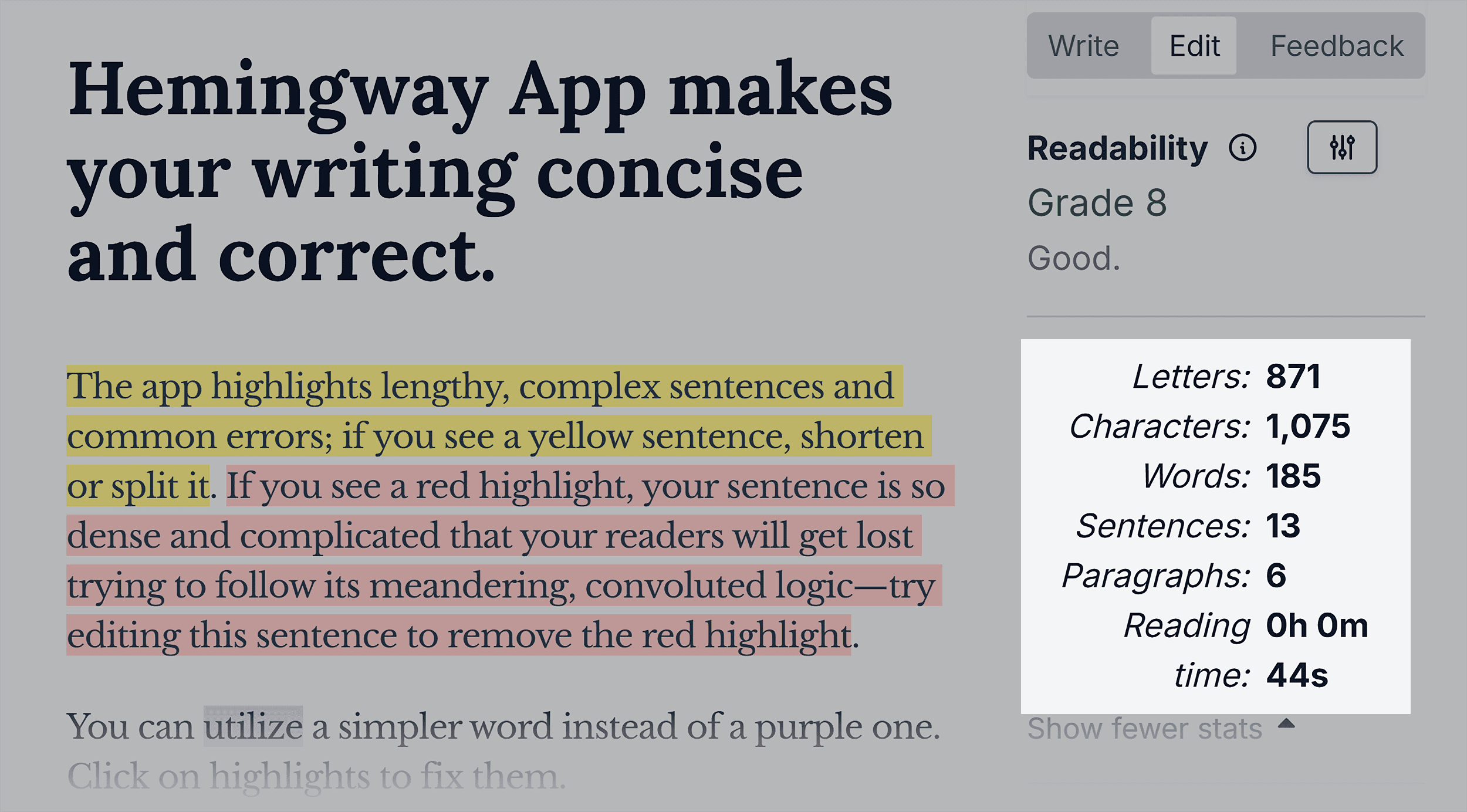
These insights will help you set a realistic goal that aligns with what search engines reward.
5. Add a Reader Profile
Including a reader profile in your content brief gives writers a clear understanding of who they’re writing for.
Without it, it can be harder to connect with the audience, and the content might not hit the mark.
For example, if your audience is made up of beginners, but the content is filled with industry jargon, the message won’t land.
A good reader profile includes key details like age, challenges, and content preferences.

These insights ensure your content resonates with the right audience.
6. Perform Original Research
To make your content stand out, include original research.
This could be data from your own surveys or case studies that highlight customer success.
These unique insights give readers something they can’t find anywhere else.
Surveys: Gather feedback from your target audience through surveys or polls.
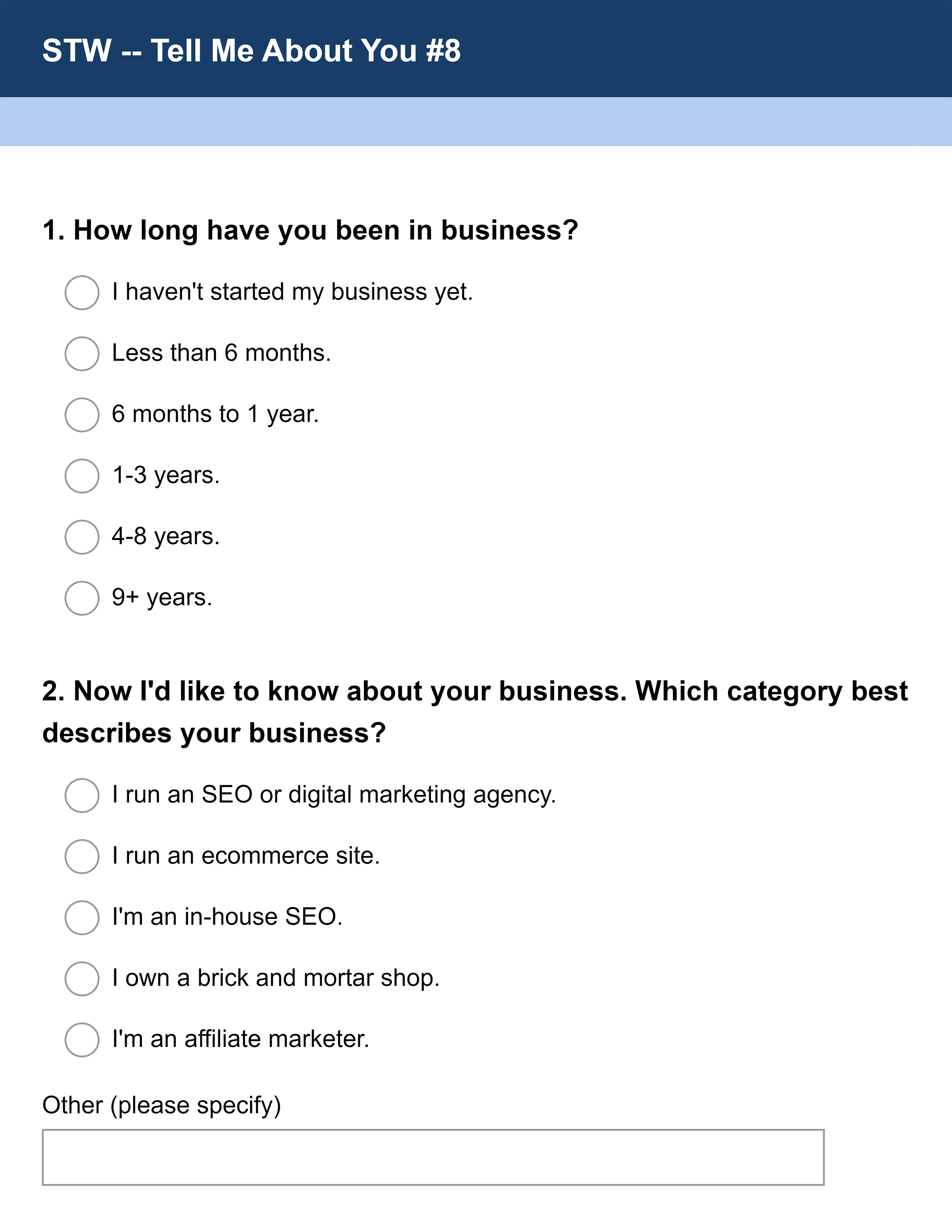
Case studies: Use real examples to show how your product or service solves problems.
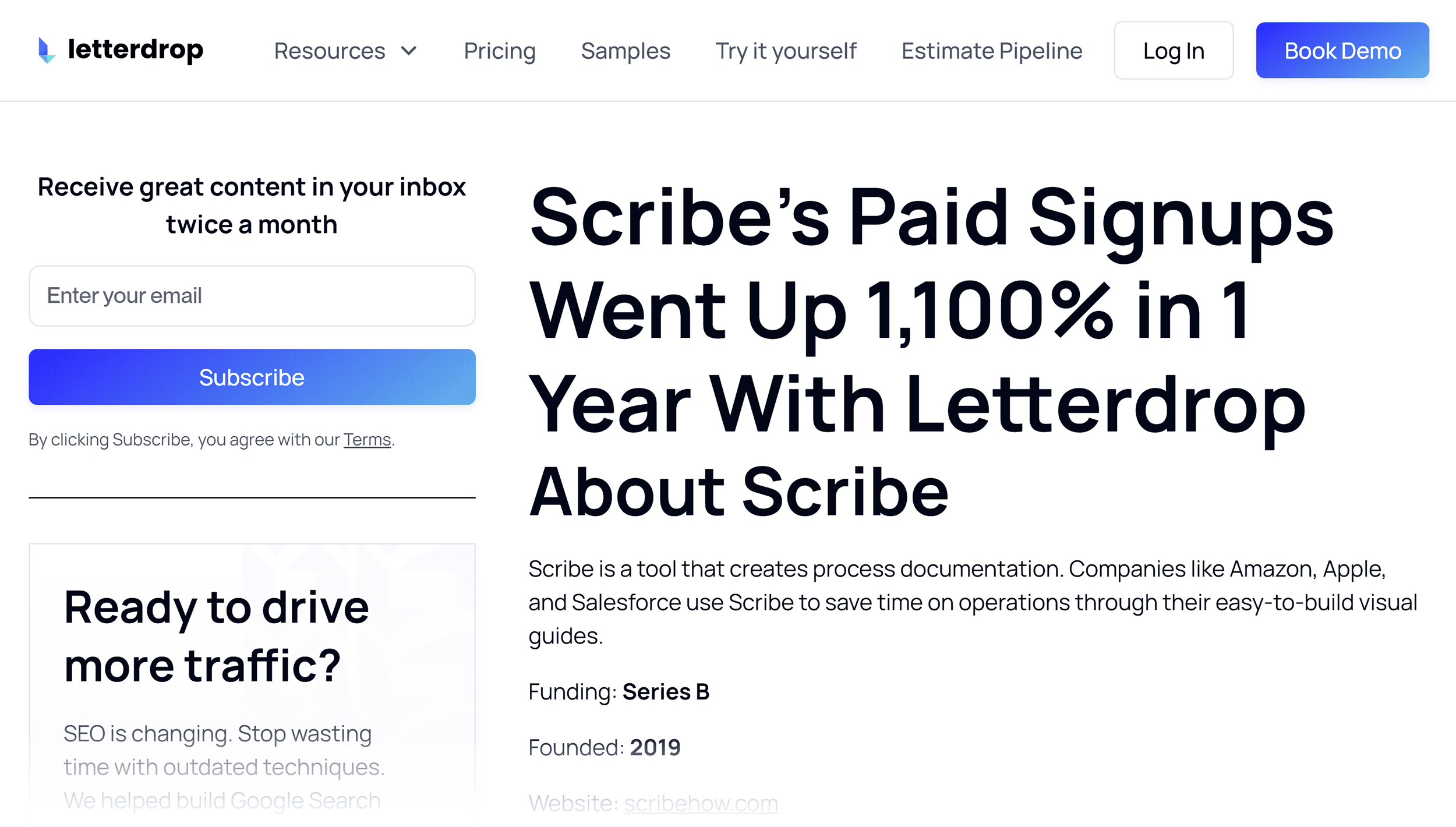
Industry reports: Analyze trends or data in your industry.

7. Interview In-House Experts
Your in-house team members are some of your best resources. They have deep knowledge of your product or service that outside sources can’t match.
Interview them to get valuable insights that will make your content stand out.
However, in-house experts are often busy, so set up a process to interview them.
Start by scheduling time in advance to fit into their busy schedules.
Prepare a list of questions beforehand to keep the interview focused and efficient.
You could also create a dedicated Slack channel so team members can respond when they have time.
Another option is asking experts to record a Loom video. This provides the information without needing to coordinate a call.
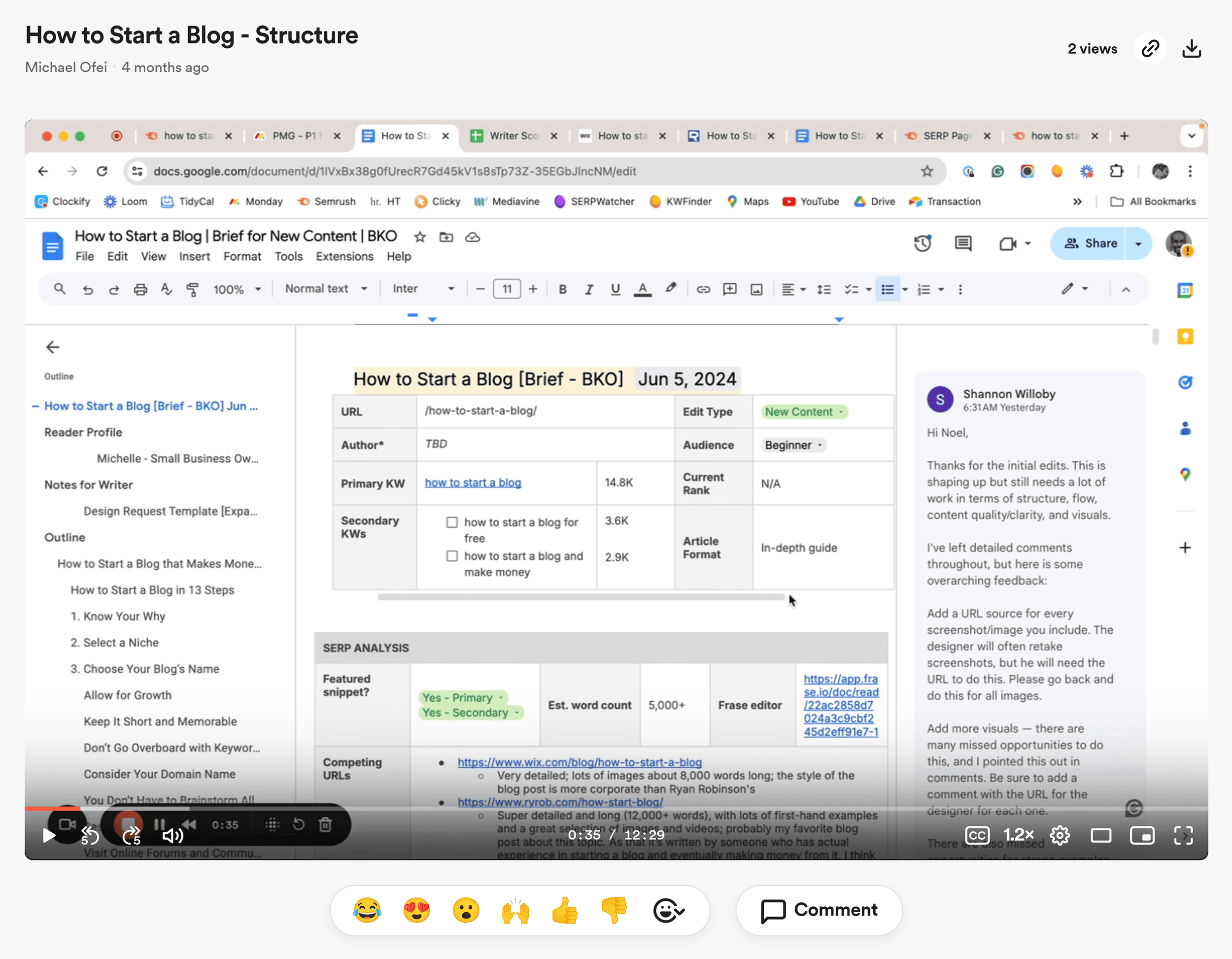
Make sure to include these expert insights in your content brief. This helps writers understand how to use the information in the final piece.
8. Create a Suggested Structure
A clear outline helps writers understand the scope and expectations. But there’s more than one way to approach structure in your brief.
The SEO-Led Approach
Sometimes, our SEO team provides detailed guidance. For example:
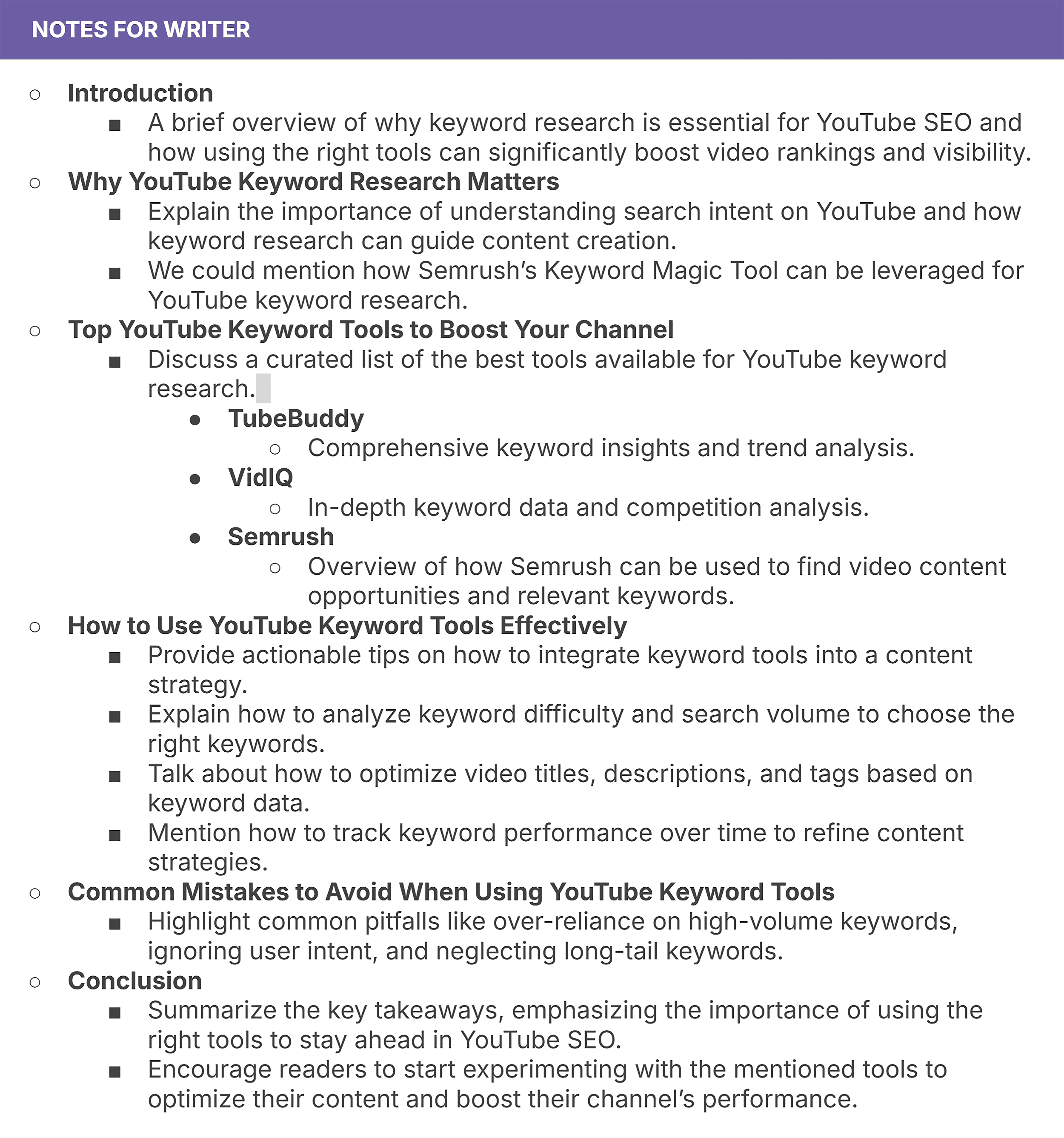
This approach works well when:
- The topic requires specific technical coverage
- Search intent analysis reveals must-have sections
- We’re updating an existing article that needs particular improvements
The Writer-Led Approach
Other times, we provide high-level topic areas and let writers develop their own structure. Like this:

Which approach should you choose? Consider your:
- Team’s experience level
- Topic complexity
- Content type (technical guide vs opinion piece)
- Production timeline
The key is maintaining flexibility.
We expect and encourage evolution from brief to outline to final draft.
Think of your suggested structure as a starting point for discussion rather than a rigid template.
3 Effective Content Brief Examples (+ Why They Work)
Best practices are helpful, but seeing real briefs in action is even better. Here are three distinct approaches that consistently deliver results at scale.
Backlinko
We’ve refined our content brief through collaboration with strategists, writers, and editors.
The result?
A template that helps us maintain consistent quality across hundreds of published articles.
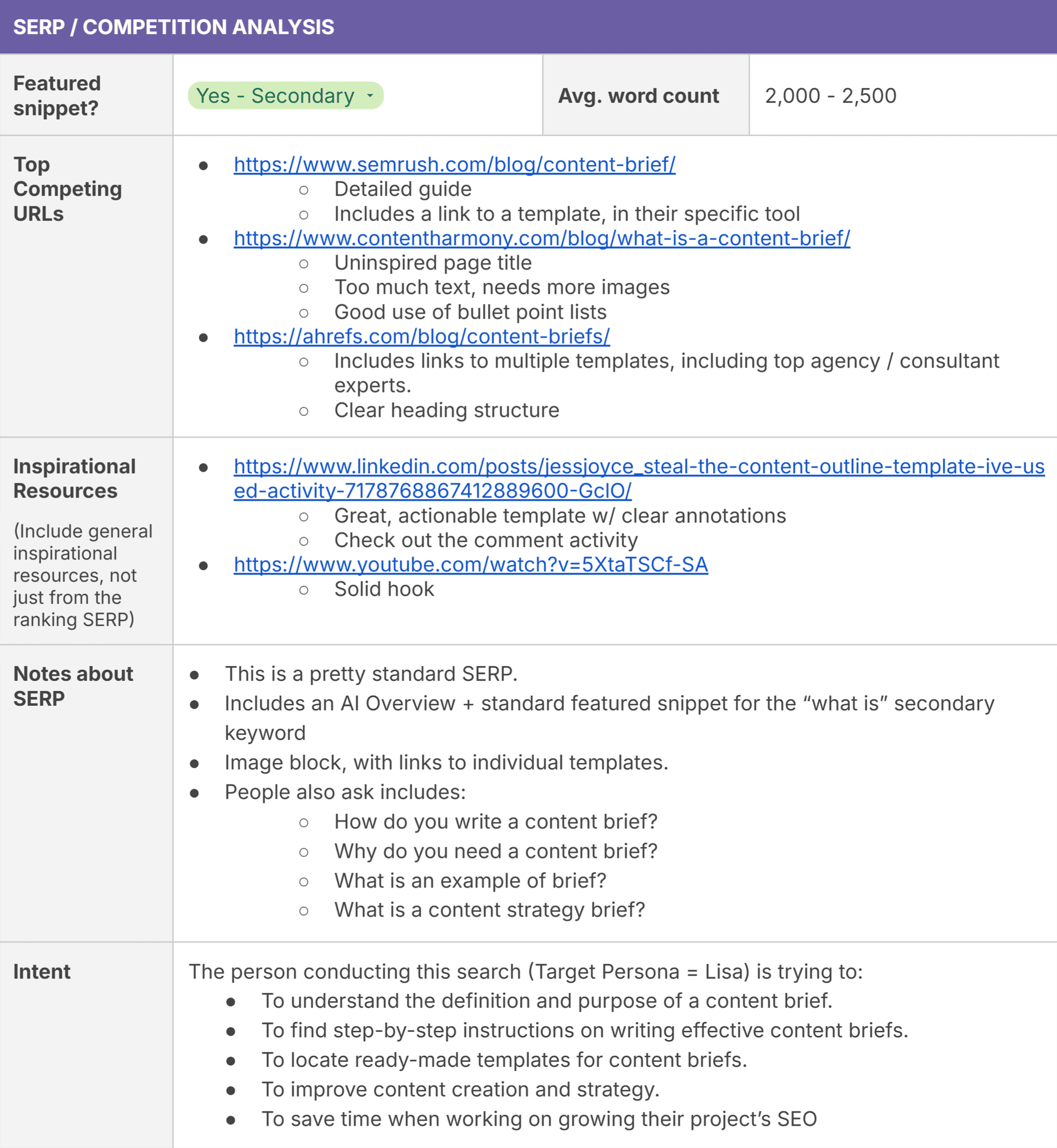
Why Our Content Brief Stands Out:
- Competitor analysis: Identifies what works in top-ranking content and where to make improvements
- Helpful resources: Includes links to relevant sources, blog posts, or podcasts for inspiration
- SERP notes: Highlights relevant content types and search results to align with search intent
Our content brief is more than a guide—it’s a plan to create content that gets noticed and brings real value.
Relato
Relato is a project management platform designed for content marketing teams.
Just like Backlinko, Relato holds its blog content to the highest standards.
That’s why their B2B Content Brief Template is such a standout.
This template is made specifically for B2B SaaS marketers. It provides a clear framework to help content marketing teams create content that speaks to B2B buyers and decision-makers.
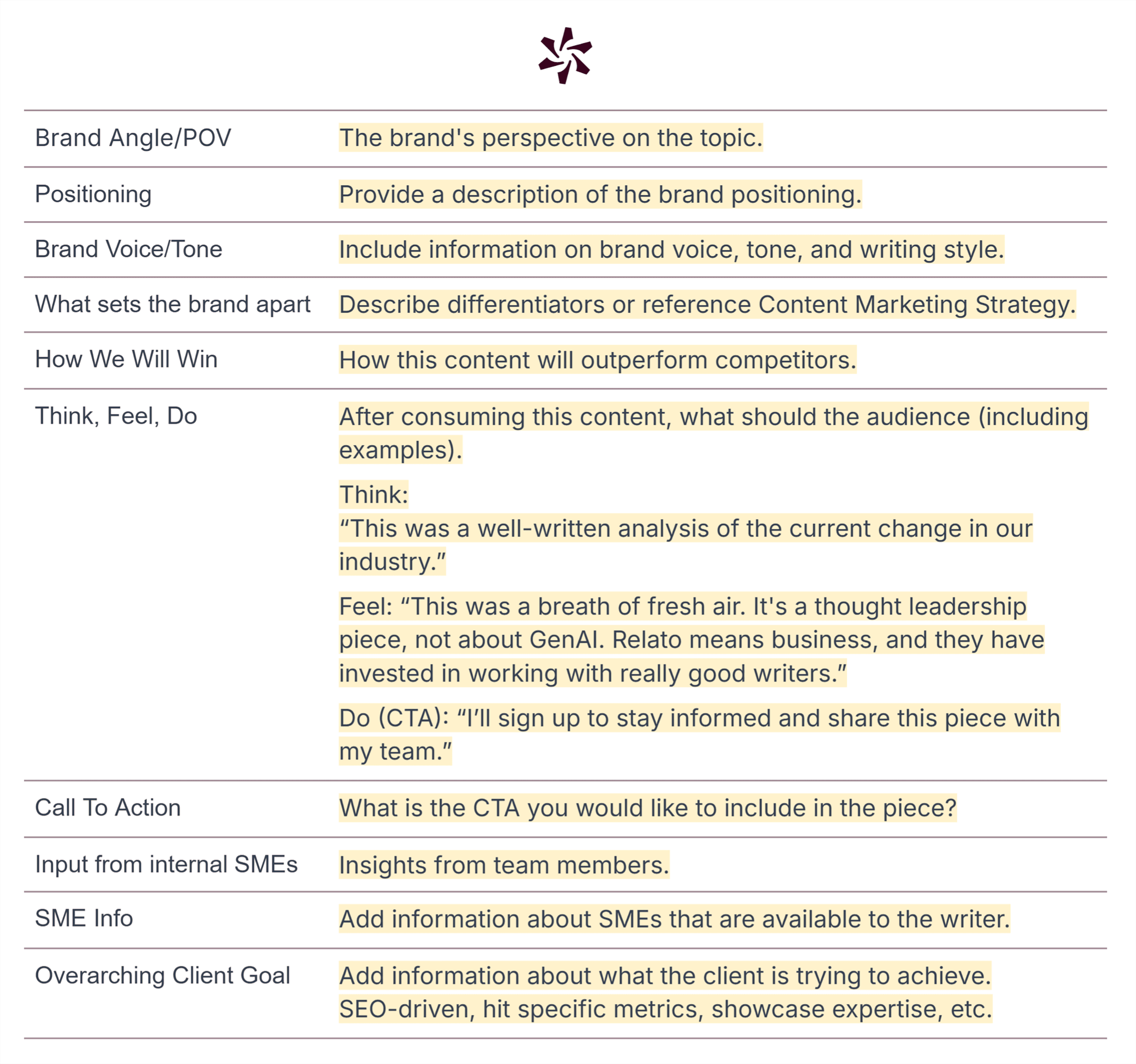
Why Relato’s Content Brief Stands Out:
- Differentiation focus: Challenges writers to highlight unique selling points
- Industry-specific structure: Tailored for B2B, focusing on roles like decision-makers and end-users
- How we will win: Guides writers to focus on strengths that will help the content beat competitors
Beam
Beam is a B2B content marketing agency that values transparency and collaboration.
They’ve openly shared their content brief template for anyone to use.
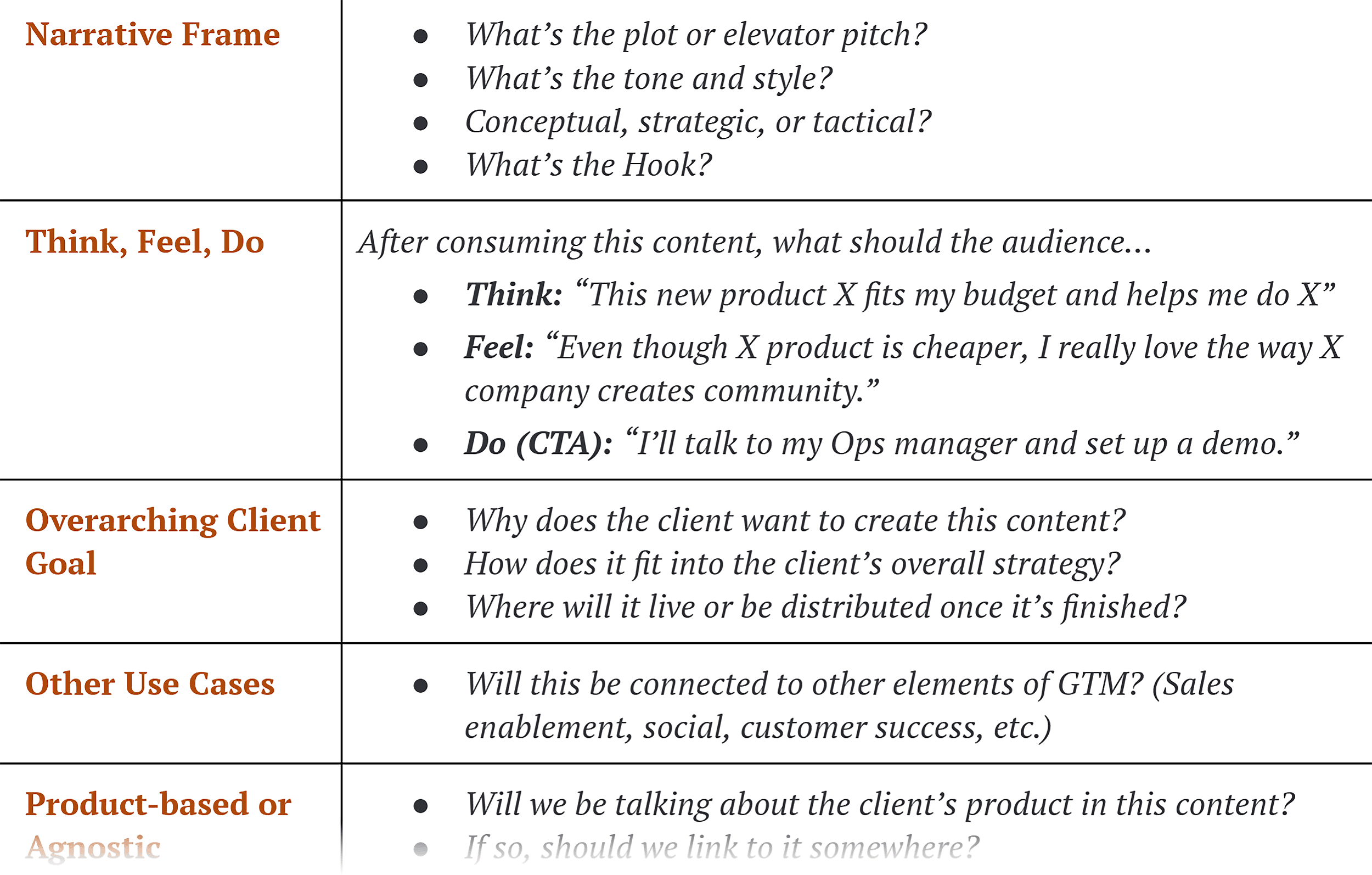
Why Beam’s Content Brief Stands Out:
- Narrative frame: Sets the tone and message, whether strategic or tactical
- Think, feel, do: Encourages writers to consider the audience and their desired outcomes
- Client goal: Ensures every piece of content boosts the client’s long-term success
Turn Your Content Briefs Into High-Converting Blog Posts
Once your brief is ready, hand it over to your writers.
Encourage them to add unique insights, data, and examples to make the content even more valuable and interesting.
For more tips, check out our guide on how to write a blog post.
It’s full of actionable steps your writers can follow to create great blog posts that rank well and motivate readers to take action.
Content Copyrights Belong to The Author. All Rights Reserved.
We're A Dallas Digital Marketing Agency That is Experts At Social Media Marketing, Website Design and Emarketing and Promotion.

